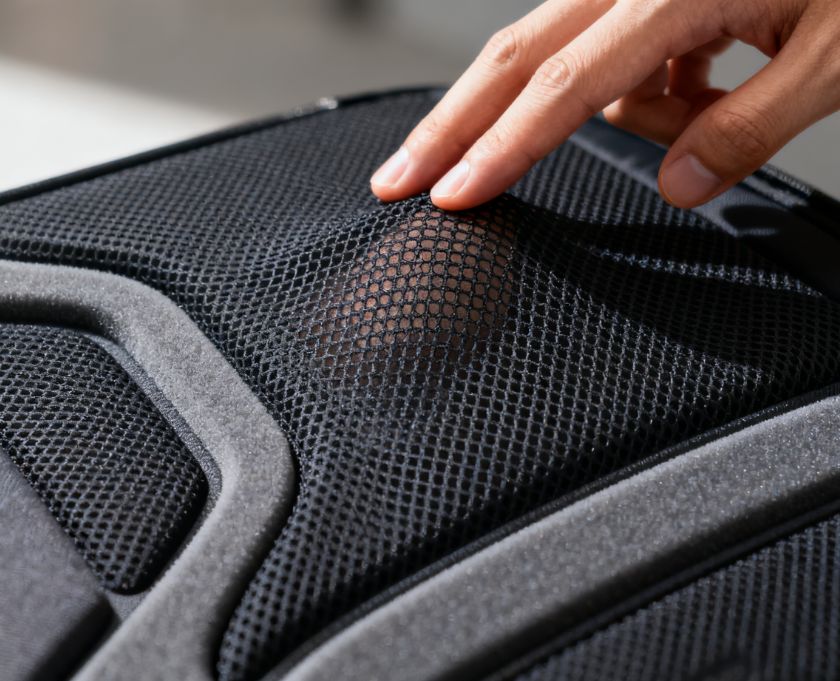Beautiful Plants For Your Interior

Laptop backpacks have become a daily necessity for students, office workers, and travelers. Yet one often-overlooked feature—the ventilated back panel—plays a critical role in comfort, health, and long-term usability. In 2025, as ergonomics and smart design dominate consumer expectations, ventilated back panels are no longer a luxury but a necessity.
The Evolution of Laptop Backpacks
Early laptop bags prioritized storage capacity but ignored ergonomics. Over the years, consumer demand shifted toward comfort, weight distribution, and breathability. Modern laptop backpacks now integrate airflow systems to meet these needs.
What Are Ventilated Back Panels?
A ventilated back panel uses mesh padding, airflow channels, or suspended designs to create space between your back and the backpack. This reduces heat buildup and allows air circulation, keeping you dry and comfortable.
Key Benefits of Ventilated Back Panels
Enhanced Comfort During Daily Commutes
Whether riding the subway or cycling, ventilation prevents discomfort from sweat buildup.
Sweat and Heat Reduction
Traditional backpacks trap heat. Ventilated panels disperse body warmth, reducing sweating.
Ergonomic Support for Long-Term Use
Breathable cushions also provide lumbar support, lowering risks of back strain.
Improved Airflow and Hygiene
Ventilation reduces odor and bacteria growth inside the back padding.
Different Types of Ventilation Systems
Mesh Padding
Lightweight, affordable, and common in mid-range backpacks.
Airflow Channels
Strategically placed grooves promote circulation and comfort.
Suspended Mesh Systems
A curved mesh keeps the bag lifted away from the back, ideal for hiking.
Hybrid Designs
Combine mesh and airflow channels for maximum effect.
How Ventilated Back Panels Improve Laptop Safety
A ventilated design doesn’t just protect your back—it protects your laptop. Reduced sweat and moisture buildup prevent internal humidity that could damage electronics.
Ideal Users for Ventilated Laptop Backpacks
- Students: Carry heavy loads daily in hot classrooms.
- Office Workers: Commute on foot, bike, or public transport.
- Travelers: Spend long hours at airports and on trips.
- Outdoor Enthusiasts: Combine laptops with outdoor gear.
Innovations in 2025: Smart and Sustainable Designs
Eco-Friendly Materials with Ventilation
Recycled polyester and organic fabrics now integrate breathable mesh.
Smart Sensors and Heat Control
Some premium backpacks monitor heat and adjust airflow dynamically.
Lightweight but Durable Construction
Carbon-fiber frames and 3D mesh create strength without bulk.
How to Choose the Right Laptop Backpack with Ventilation
- Fit and Ergonomics – Adjustable straps and lumbar support.
- Material Durability – Ensure long-lasting mesh and padding.
- Style vs. Functionality – Balance aesthetics with breathability.
Common Mistakes When Buying a Laptop Backpack
- Choosing style over comfort.
- Ignoring ventilation in hot climates.
- Buying poor-quality mesh that wears out quickly.
FAQs About Ventilated Back Panels
Q1: Do ventilated panels make backpacks heavier?
No, modern designs use lightweight mesh and padding.
Q2: Are they only for outdoor backpacks?
Not anymore—many laptop backpacks now feature airflow panels.
Q3: Do they increase cost significantly?
Slightly, but the comfort and durability justify the investment.
Conclusion: The Future of Backpack Comfort
In 2025, ventilated back panels are more than a comfort feature—they represent a fusion of ergonomics, sustainability, and technology. Whether you are a student, professional, or traveler, investing in a ventilated laptop backpack ensures not just comfort but also healthier posture, reduced sweat, and longer laptop life.